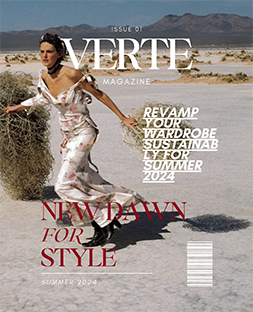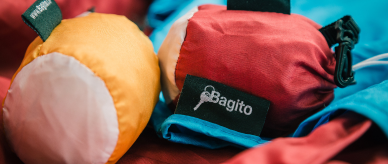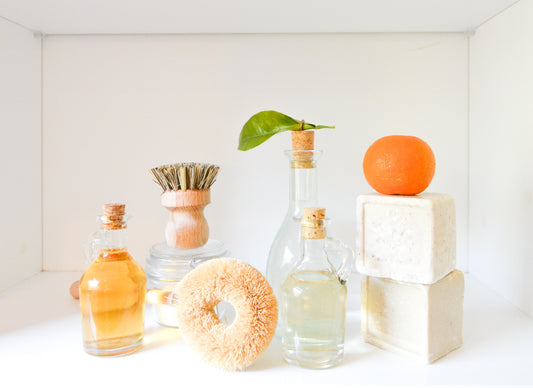In a world where over 100 billion pieces of clothing are produced annually and the United States alone generates more than 15 million tons of used textile waste, 17 Most Worrying Textile Waste Statistics & Facts [2023] (theroundup.org) it's clear that the fashion industry's fast-paced consumerism is taking a toll on our planet. In response to this overwhelming trend, slow fashion has emerged as a refreshing alternative that encourages us to shop smarter, become more informed, and practice mindful consumption. To paraphrase the iconic designer:
Vivienne Westwood, slow fashion encourages us to "buy less, choose well, and make it last."
In essence, slow fashion is a much-needed antidote to the fast fashion frenzy that has dominated our wardrobes for far too long.
Slow Fashion: A Paradigm Shift
Slow fashion is a movement that centers on creating and shopping for higher-quality clothing items designed to stand the test of time. What is slow fashion? Movement toward more sustainable style is expanding - ABC News (go.com) This growing trend promotes a range of sustainable practices, including fostering a deep connection with the environment, reducing toxins and waste, and advocating for ethical treatment of workers throughout the supply chain. The core principles of slow fashion encompass the use of sustainable materials, offering fewer collections, promoting fair trade, minimizing waste, optimizing resource usage, and maintaining transparency.
Breaking Free from "Shopaholism"
If you're familiar with the term "shopaholic," consider a slow fashion convert as its polar opposite. Every choice you make, from the clothes you select to your choice of accessories, can make a significant impact. Regardless of your budget, values, or time constraints, you'll find ways to reduce your wardrobe's environmental footprint. Let's delve into these steps to transform your approach to fashion:
- Treat Fashion Like Food to Avoid Waste and Toxins
Much like the saying "you are what you eat," you are also what you wear. To embark on your slow fashion journey, start by viewing your fashion choices through the same lens you use for your dietary decisions. Prioritize information and avoid waste, just as you would with your food choices. Consider the following slow fashion principles:
- Examine clothing labels to ensure high quality and absence of toxins like synthetics, plastics, and harmful dyes, preferably opting for organic materials.
- Similar to slow food, less is more in slow fashion. Favor garments with fewer ingredients (single fabrics instead of blends).
- Avoid wasting clothing, a critical principle akin to wasting food, which has significant environmental consequences.
- Recognize that well-made clothing may come at a higher price, but it's an investment in quality and sustainability.
Tanzen Extra Long Lux Coat - Camel – Verte Mode

Sustainable Organic Ivy Ruched Drape Dress – Verte Mode
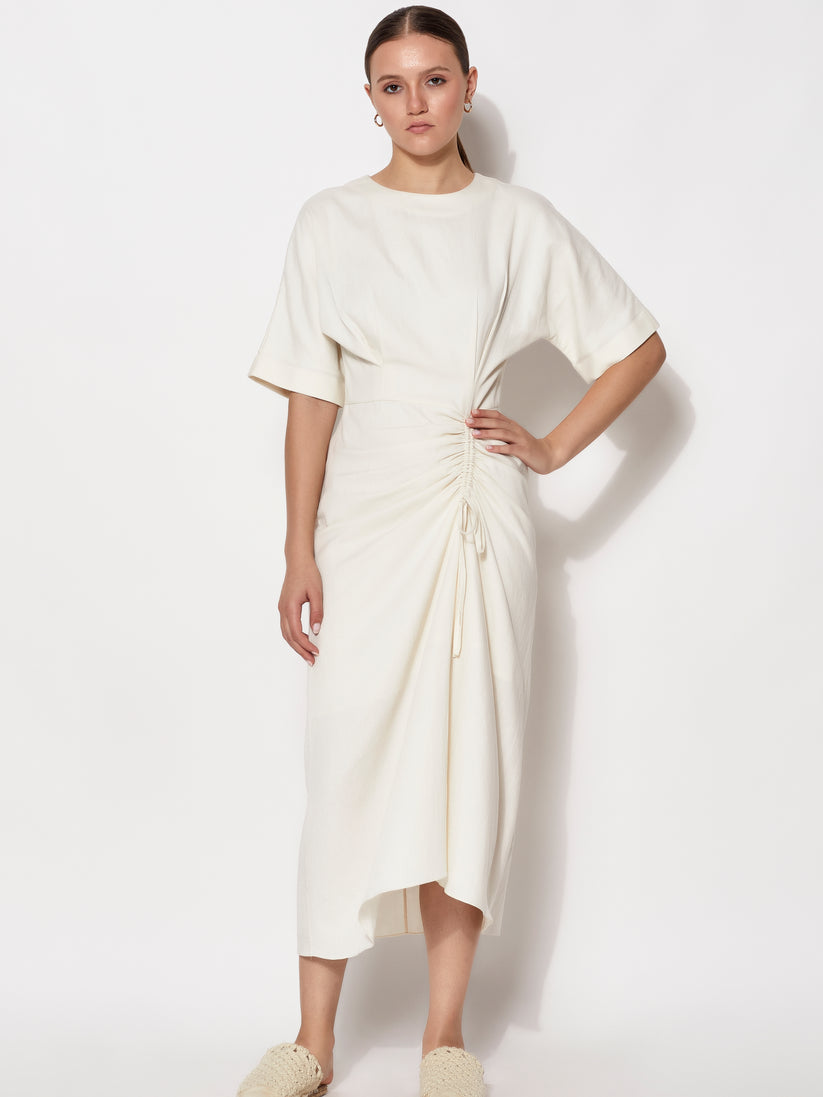
EBI Midi Vest - Camel – Verte Mode

Flammé Knit Crop Top – Verte Mode

Wildrye Slip Dress - Indigo – Verte Mode

- Become a Smart Shopping Sherlock
Transitioning to slow fashion involves becoming a discerning shopper. Investigate fashion brands and their practices to ensure they align with your sustainable values. Here are some tips for smart, slow fashion shopping:
- Connect with ethical fashion brands on social media, inquire about their materials, sources, and production processes.
- Read the "About Us" pages of brands you're interested in, as more details about their commitment to slow fashion are a positive sign.
- Dig deeper to determine if a brand truly follows slow fashion principles. Investigate their supply chain transparency and environmental performance.
- Look for certifications, especially the Global Organic Textile Standard (GOTS) for natural fabrics, which guarantees monitoring throughout the supply chain.
Long Tank Mini Dress - Walnut – Verte Mode

The ideal gender-neutral cardigan by ZEROBARRACENTO – Verte Mode

Crop Top Mehonia Off-White – Verte Mode

Munich - PYRATEX® Organic Cotton Leggings - Green Ash – Verte Mode

Organic Waffle Hoodie – Verte Mode

- Ditch the 'Barely Wear' Culture and Save Big
The 'barely wear' culture, characterized by the rapid disposal of clothing after minimal use, is a significant contributor to the fashion industry's environmental problems. Slow fashion advocates a different approach:
- Passively but importantly, commit to wearing the clothes you already own and avoid constant shopping for new items.
- Challenge yourself not to discard any clothing for six months, then evaluate your closet. If storage space is an issue, consider renting a small storage unit to keep items you're not currently wearing but might need in the future.
- Only part with high-quality items if you haven't worn them in the past two years, either by donating or selling them.
- Slow Fashion Tricks: Apply the 30 Wears Test for Easy Decisions
The 30wearschallenge is a reliable method introduced by Livia Firth, founder of Eco Age, to encourage conscious purchasing decisions:
- Before buying, ask yourself if you'll wear the item at least 30 times. If the answer is yes, proceed with the purchase.
- If the item doesn't pass the 30-wear threshold, reconsider the purchase. Avoid investing in garments with a short shelf life.
- Customize your "wears" threshold based on your lifestyle and needs, but stick with it as a benchmark for sustainable fashion investments.
- Consider made-to-order clothing for a sustainable and personalized approach, supporting local businesses and minimizing complex supply chains.
ALEX - Coat | ZEROBARRACENTO – Verte Mode

Kingston Silk Camisole Top in Black – Verte Mode

The new Sustainable and summer trench by ZEROBARRACENTO – Verte Mode

Dakar TENCEL™ Straight Leg Jumpsuit in Licorice Black – Verte Mode

Avani Apparel Dress Saule Black – Verte Mode

- Declutter & Create a Slow Fashion Capsule Wardrobe
Overconsumption often stems from disorganization, leading to the need for a simple solution: the slow fashion capsule wardrobe. Curate a collection of quality staples aligned with slow fashion principles:
- Select a color palette based on your personal style and stick to it.
- Choose a base color (common options include black, grey, navy, or beige) and build your wardrobe around it.
- Embrace neutral basics and introduce up to three accent colors and a few patterns if desired.
- Prioritize quality over quantity in your capsule wardrobe, focusing on sustainable textiles and versatile pieces suitable for various combinations.
- Add carefully selected jewelry pieces and accessories, emphasizing versatility and timeless appeal.
The ideal gender-neutral cape by ZEROBARRACENTO – Verte Mode

The ideal gender-neutral wool suit by ZEROBARRACENTO – Verte Mode

Sustainable set by ZEROBARRACENTO – Verte Mode

The Waight - The Acorn Dyed Sweatpant – Verte Mode

Resew House Full Zip Jacket – Verte Mode

- Break up with Bad Influence(rs) to Achieve Your Goals
Decluttering extends beyond your closet—it also involves cleaning up your online influences, particularly on social media, The decluttering philosophy that can help you keep your home organized : Life Kit : NPR:
- Unsubscribe from newsletters sent by influencers and brands promoting fast fashion. This step saves you money and countless hours of mindless scrolling, keeping you aligned with the slow fashion movement.
- Unfollow influencers who endorse trends and fast fashion on social media. Most influencers promote non-sustainable clothing and trend-based fashion.
- Identify triggers for impulse shopping and eliminate them. This might involve avoiding clothing haul videos on YouTube or unfollowing celebrities known for wearing an item just once.
- Seek out new sustainable fashion influencers who inspire you to shop ethically and sustainably.
- Stick to Natural Fabrics to Reduce Chemicals
Many cheap clothing items are laden with toxins, creating health and environmental hazards. Slow fashion promotes the use of natural and sustainable fabrics:
- Recognize that our inexpensive clothes often contain harmful chemicals. Toxins vary based on factors like manufacturing processes, dyes, and exposure duration.
- Be aware that chemicals can be present in fabrics ranging from cotton (often heavily sprayed with pesticides) to synthetic materials like polyester, nylon, acrylic, rayon, and lycra.
- Consider eco-textiles and natural fabrics as alternatives, such as:
- Linen, a natural and flexible fabric made from flax plants.
- Organic cotton, which avoids pesticides and genetic modification.
- Wool, a natural choice for fall and winter clothing.
- Peace Silk, an eco-friendly alternative produced through a slow, natural process with silkworms.
- Hemp, a durable and ancient fabric, often combined with cotton for added softness.
- Leather, especially used or upcycled options for a sustainable choice.
Upcycled Sailboat Sail- The Duffel Bag – Verte Mode

Upcycled Leather Fanny Pack - Black – Verte Mode

Handmade Upcycled Leather Cross Sandal - Sapphire Blue – Verte Mode

Upcycled Nylon Fay Sport Bra – Verte Mode

Upcycled Leather Luxe Cinch Bucket Bag – Verte Mode

8. Opt for Timeless Jewelry: 'No' to Fads, 'Yes' to Classics
Just as slow fashion emphasizes timeless clothing, the same philosophy applies to jewelry. Invest in pieces that withstand the test of time:
- Choose jewelry that complements your capsule wardrobe. Classic pieces like stud earrings, simple necklaces, and elegant bracelets can be mixed and matched with various outfits.
- Prioritize quality over quantity. Select pieces made from durable materials like sterling silver, gold, or stainless steel that won't tarnish or lose their appeal quickly.
- Avoid trendy jewelry that might go out of style after a season. Instead, opt for classic designs that can be worn for years to come.
- Support artisanal jewelry makers who create unique, handcrafted pieces with sustainable materials.
- Consider ethical jewelry brands that adhere to fair labor practices and use ethically sourced gemstones and metals.
Laura Elizabeth Double Chain Hexagon Necklace – Verte Mode

Eco-Friendly Double Chain Hamsa Necklace – Verte Mode

Laura Elizabeth Liz Leaf Loop Earrings – Verte Mode

Raven + Lily Kamali Studs - Jasper + Amazonite | Verte Mode

MHART Handmade Triangle Pave Raw Diamond Earrings – Verte Mode

- Embrace Secondhand and Vintage Shopping
One of the most effective ways to participate in slow fashion is to shop for secondhand or vintage clothing and accessories, How Participating In the Slow Fashion Movement Is A Privilege? (femonomic.com):
- Thrift stores, consignment shops, and online platforms like eBay and Poshmark offer a treasure trove of pre-loved items.
- Vintage shops carry unique, timeless pieces that can add character to your wardrobe.
- Secondhand shopping reduces waste by giving existing clothing a second life.
- Vintage and thrifted items often come at a fraction of the cost of new, fast fashion alternatives.
- Enjoy the thrill of discovering one-of-a-kind fashion gems while contributing to a sustainable fashion cycle.
- Support Sustainable Brands and Ethical Practices
As the slow fashion movement gains momentum, more brands are emerging with a commitment to sustainability and ethical practices:
- Research and identify brands that align with slow fashion principles, including transparency in their supply chains, use of sustainable materials, and fair labor practices.
- Support local artisans and businesses that prioritize craftsmanship and quality.
- Explore online marketplaces like Etsy, which feature handmade and eco-friendly products from independent sellers.
- Look for certifications like Fair Trade, which ensures that workers receive fair wages and safe working conditions, or B Corp certification, which signifies a commitment to environmental and social responsibility.
- Be mindful of greenwashing—some brands falsely claim to be sustainable or ethical. Verify their claims through independent sources.
Organic Fair Trade Whole Coffee Beans-1 lb Breakfast Blend – Verte Mode

Darzah Black Egypt Leather Tote Bag – Verte Mode

Terra Thread Bumi Eco Duffel Bag – Verte Mode

Apple Tart Green Tea | Verte Mode

Navy Gala Puzzle Cardholder Crafted From Apple Peel – Verte Mode

- Develop Your Repair and Upcycling Skills
A vital aspect of slow fashion is extending the life of your clothing through repairs and upcycling:
- Learn basic sewing skills to mend small tears, replace buttons, and fix loose hems.
- Invest in a sewing machine to tackle more significant repairs and alterations.
- Explore upcycling projects to transform old or ill-fitting garments into something new and exciting.
- Attend workshops or classes to expand your skills and connect with a community of like-minded individuals.
- Follow online tutorials and guides to discover creative ways to breathe new life into your wardrobe.
- Rent or Borrow Special Occasion Pieces
For those special occasions that require unique attire, consider renting or borrowing instead of buying new, Alternatives to Buying Clothes: Clothing Swaps and Renting Clothes | PLAN3T - Cashback. For Good.:
- Rental platforms offer a wide range of formal and special occasion dresses, suits, and accessories.
- Sharing economy apps and websites allow you to borrow clothing items from friends or peers for one-time use.
- Renting reduces the demand for single-use outfits and minimizes the environmental impact of infrequently worn garments.
- It also saves you money and storage space while encouraging sustainable consumption.
- Invest in Quality Shoes for Longevity
Slow fashion isn't limited to clothing; it extends to footwear as well:
- Prioritize comfortable, high-quality shoes made from durable materials like leather or suede.
- Quality shoes can last for many years, reducing the need for frequent replacements.
- Choose classic styles that won't go out of fashion quickly.
- Invest in shoe care products to maintain the appearance and condition of your footwear.
- When shoes reach the end of their life cycle, explore options for shoe repair or recycling.
Cannes Sling Back Flat Shoes in Charcoal Black – Verte Mode
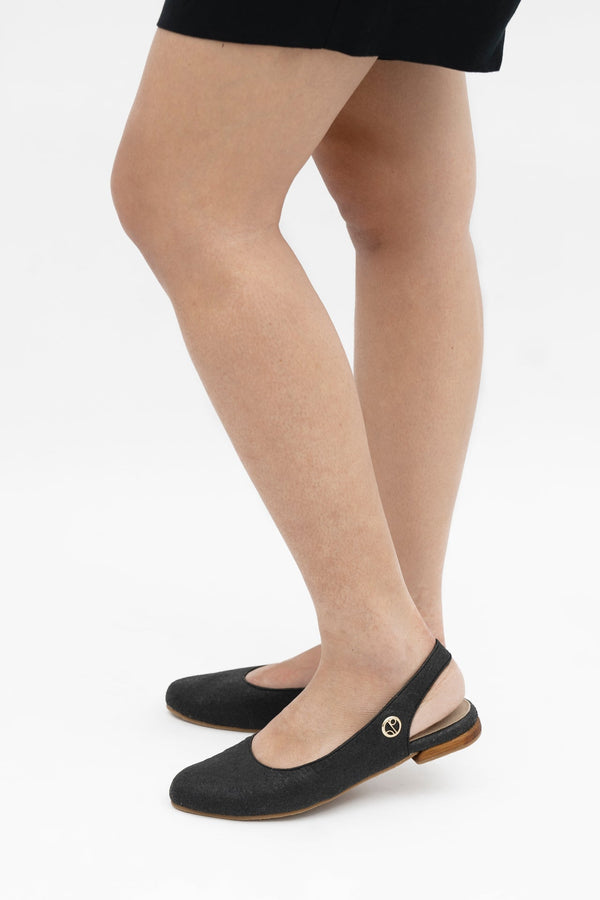
Alex Dusky Blue 100% Sustainable Hemp Shoes – Verte Mode

Dooeys Blue Grey House Shoe Loafers | Verte Mode

Darzah Flowers Ankle Boot - Brown – Verte Mode

Darzah The Tatreez Oxford in Silver – Verte Mode

- Educate Yourself and Stay Informed
Knowledge is a powerful tool in the journey towards slow fashion:
- Stay informed about the environmental and social impact of the fashion industry.
- Read books, articles, and watch documentaries on sustainable fashion and ethical practices.
- Join online communities and forums dedicated to slow fashion, where you can exchange ideas and learn from others.
- Attend workshops, seminars, and conferences focused on sustainable fashion to deepen your understanding and connect with experts in the field.
- Adopt a Mindful Shopping Approach
Slow fashion encourages mindfulness in every shopping decision you make:
- Pause and reflect before making a purchase. Ask yourself if the item aligns with your values and if you genuinely need it.
- Implement the "One In, One Out" rule: when you buy a new item, remove an old one from your wardrobe to maintain a manageable closet size.
- Set a clothing budget and stick to it, allocating funds for quality pieces that align with your style and values.
- Make a shopping list and prioritize essential items over impulse purchases.
- Practice gratitude for the clothing you already own, fostering a sense of contentment and reducing the desire for excess.
- Organize Clothing Swaps with Friends
Clothing swaps are an enjoyable and sustainable way to refresh your wardrobe:
- Organize clothing swap events with friends, family, or colleagues to exchange gently worn items.
- Invite participants to bring clothing, shoes, and accessories they no longer wear but are still in good condition.
- These events foster community, reduce waste, and provide an opportunity to discover new-to-you pieces.
- Ensure any leftover clothing is donated or responsibly recycled to minimize environmental impact.
- Support Sustainable Fashion Innovations
Innovations in sustainable fashion are paving the way for a brighter future:
- Explore clothing brands that use innovative, eco-friendly materials such as Tencel, Piñatex (made from pineapple fibers), or Mycelium (a fungal-based leather alternative).
- Keep an eye on developments in circular fashion, which focuses on creating products with materials that can be easily recycled, upcycled, or biodegraded.
- Embrace digital fashion, a burgeoning trend that allows you to enjoy fashion virtually while minimizing physical clothing production.
London Piñatex® Saddle Bag in Cherry Red – Verte Mode

Berlin Piñatex® Thin Belt in Canela Brown – Verte Mode

Mini London Piñatex® Cross Body Bag in Truffle Black – Verte Mode
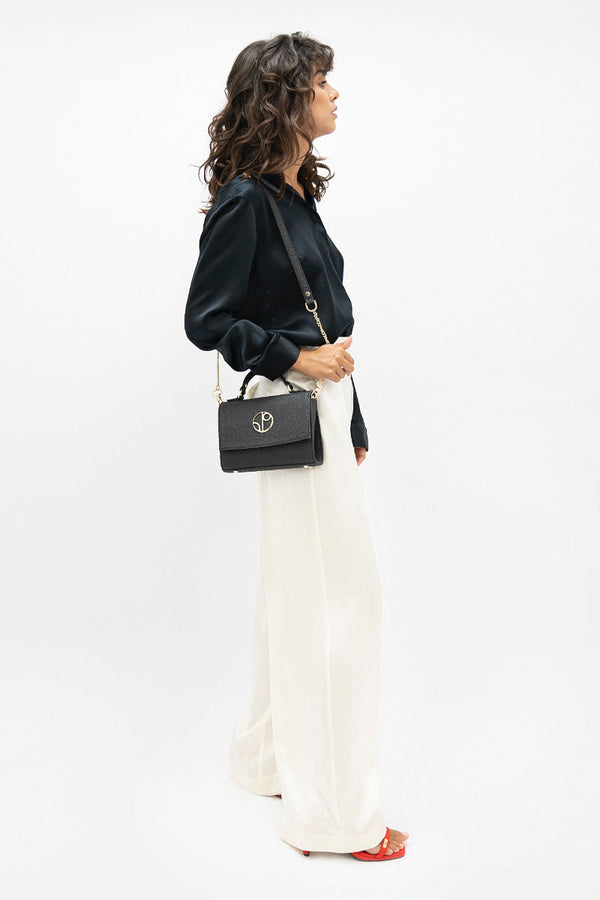
Dakar TENCEL™ Straight Leg Jumpsuit in Sommerhus Blue – Verte Mode

Biarritz TENCEL™ Modal Beach Sarong in Oyster Black – Verte Mode

- Engage in DIY Fashion Projects
Getting hands-on with fashion can be a fun and creative way to embrace slow fashion:
- Experiment with tie-dye, fabric painting, or embroidery to personalize and refresh your clothing.
- Try your hand at creating simple accessories like scarves, headbands, or tote bags.
- Repurpose old clothing into new items, like turning worn-out jeans into stylish denim shorts.
- Advocate for Slow Fashion in Your Community
As an advocate for slow fashion, you can make a difference in your local community:
- Organize events, workshops, or discussions to raise awareness about sustainable fashion practices.
- Collaborate with local businesses and designers to promote slow fashion initiatives.
- Encourage schools and educational institutions to incorporate sustainability and ethical fashion into their curricula.
- Calculate Your Fashion Footprint
Understanding the environmental impact of your clothing choices is an essential step towards sustainable fashion:
- Use online tools and calculators to estimate your fashion footprint, which includes factors like water usage, greenhouse gas emissions, and waste generation.
- Assess your fashion consumption habits and identify areas where you can reduce your impact.
- Be Patient and Persistent
Transitioning to slow fashion is a journey, not a destination:
- Recognize that change takes time, and it's okay to start small.
- Celebrate your successes along the way, whether it's reducing waste, supporting ethical brands, or embracing secondhand shopping.
- Share your experiences and knowledge with others to inspire them to join the slow fashion movement.
- Extend Slow Fashion to Other Aspects of Life
Slow fashion isn't just about clothing; it's a holistic approach to living more sustainably:
- Apply slow fashion principles to other areas of your life, such as home decor and furnishings. Choose durable, eco-friendly materials and timeless designs.
- Reduce your overall consumption by embracing minimalism and decluttering your living spaces.
- Practice mindful consumption in your daily life, whether it's food, transportation, or household goods.
No. 2598 The Ranch Candle – Verte Mode


Organic Handmade Neem Wood Chopping Board/Platter – Verte Mode

Organic Cotton & Beeswax - Food Wraps – Verte Mode
Organic Curves' Hand Screen-Printed 100% Cotton Multi color Apron – Verte Mode

- Advocate for Industry-Wide Change
As a conscious consumer, your choices can have a ripple effect in the fashion industry:
- Support organizations and initiatives that advocate for sustainable and ethical fashion practices.
- Engage with brands through social media and email, urging them to adopt more responsible policies and practices.
- Vote with your wallet by supporting brands that align with slow fashion principles and boycotting those that don't.
- Participate in or support campaigns that call for transparency, fair wages, and better working conditions in the fashion supply chain.
- Stay Resilient in the Face of Challenges
Transitioning to slow fashion may come with challenges, such as higher upfront costs and limited availability of sustainable options:
- Recognize that your commitment to slow fashion is an investment in a more sustainable future.
- Seek out affordable sustainable brands and explore secondhand options to mitigate cost concerns.
- Embrace the opportunity to build a wardrobe that reflects your values and style more authentically.
- Celebrate Your Unique Style
Slow fashion empowers you to express your individuality through your clothing choices:
- Embrace your unique style and preferences, rather than succumbing to trends.
- Experiment with vintage and secondhand pieces to create distinctive looks that stand out from the crowd.
- Use your clothing as a form of self-expression and a reflection of your commitment to a more sustainable lifestyle.
90s Baby Tee - White – Verte Mode

APÉRO BETTIE SKIRT - YELLOW DAMIER – Verte Mode

Floral Bralette Wrap Top – Verte Mode

The ideal gender-neutral vest by ZEROBARRACENTO – Verte Mode

Organic Cotton Fitted Ribbed Polo – Verte Mode

- Lead by Example
Your journey into slow fashion can inspire others to follow suit:
- Share your slow fashion experiences and successes with friends and family.
- Encourage your loved ones to join you on the journey, whether it's through clothing swaps, shopping trips, or educational discussions.
- Be patient and understanding, recognizing that everyone's path to slow fashion is different.
- Practice Gratitude
Slow fashion encourages gratitude for what you have and a deeper appreciation for your clothing:
- Regularly express gratitude for the clothing you own and the stories behind each piece.
- Take care of your garments with love and mindfulness, extending their lifespan.
- Cultivate a sense of contentment in knowing that you're contributing to a more sustainable and ethical fashion industry.
- Continue Learning and Evolving
The slow fashion movement is continually evolving, and there is always more to learn and discover:
- Stay open to new ideas, innovations, and sustainable practices in the fashion industry.
- Adapt your slow fashion journey as your values and priorities evolve over time.
- Be receptive to feedback and critique, as it can help you refine your approach to sustainable fashion.
- Support Local and Artisanal Craftsmanship
Local artisans and craftspeople often align with slow fashion principles:
- Seek out locally made clothing and accessories, supporting small businesses in your community.
- Embrace the artistry and craftsmanship of handmade and artisanal products.
- Explore traditional textile techniques and cultural influences in fashion, celebrating diversity and heritage.
Organic Cotton Slouchy Sweatshirt – Verte Mode

Paneros Vintage Cotton Crop Tee in Golden Glow – Verte Mode

Recycled UpLift V Bra - Sand – Verte Mode

Slim Backpack - Day Owl – Verte Mode

Luxe Traveler's Wallet Forest Green Croc – Verte Mode

- Remember Your Impact
Every choice you make as a consumer has an impact on the fashion industry and the planet:
- Remind yourself of the broader implications of your purchasing decisions, from the well-being of garment workers to environmental sustainability.
- Celebrate the positive changes you've made in your fashion consumption habits and the contributions you've made to a more ethical and sustainable fashion industry.
Slow fashion is not a fleeting trend but a transformative movement that empowers individuals to make conscious and sustainable choices in their wardrobes. By embracing slow fashion principles, you can reduce your environmental footprint, support ethical practices, and express your unique style. Your journey into slow fashion is a step toward a more sustainable, equitable, and mindful future for the fashion industry and our planet.


